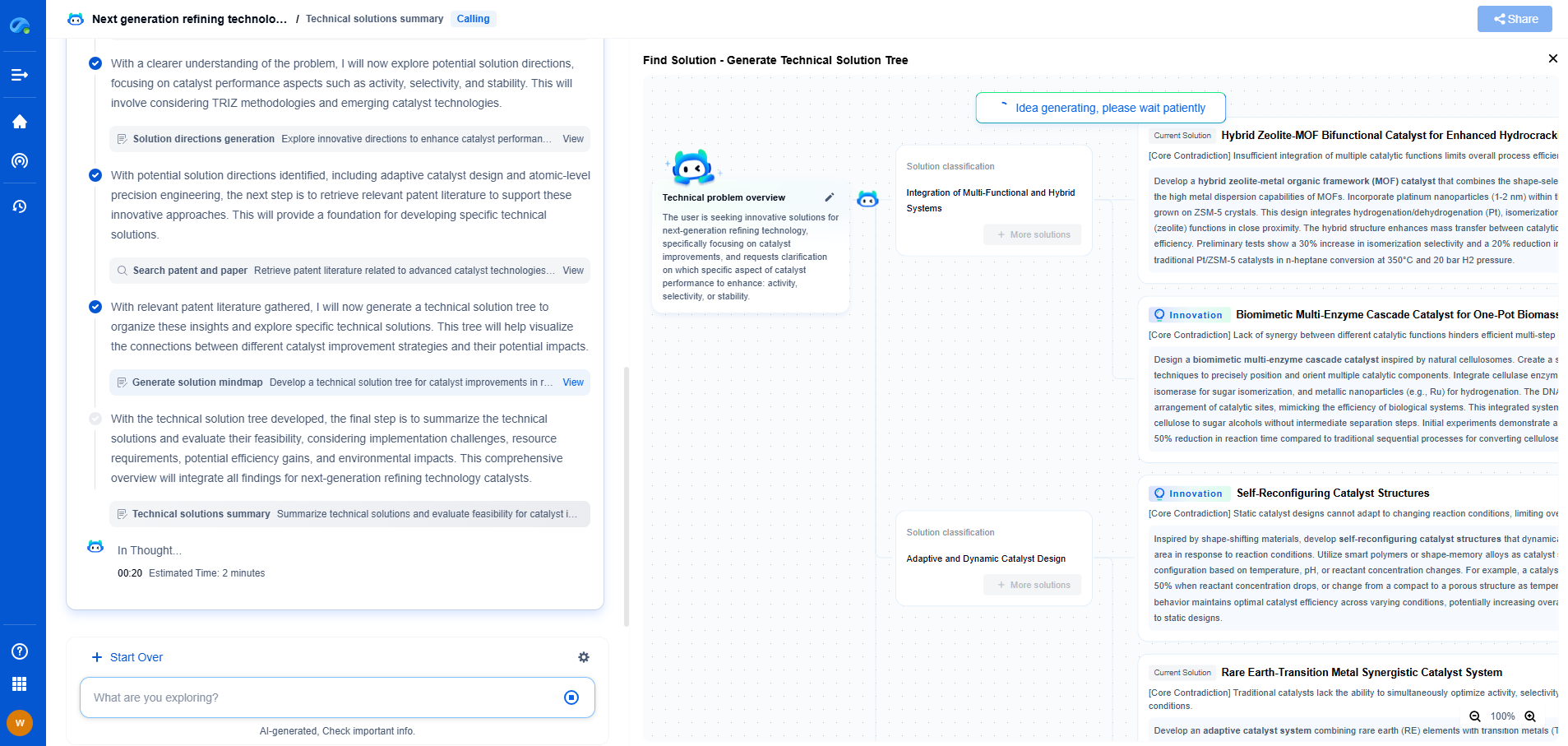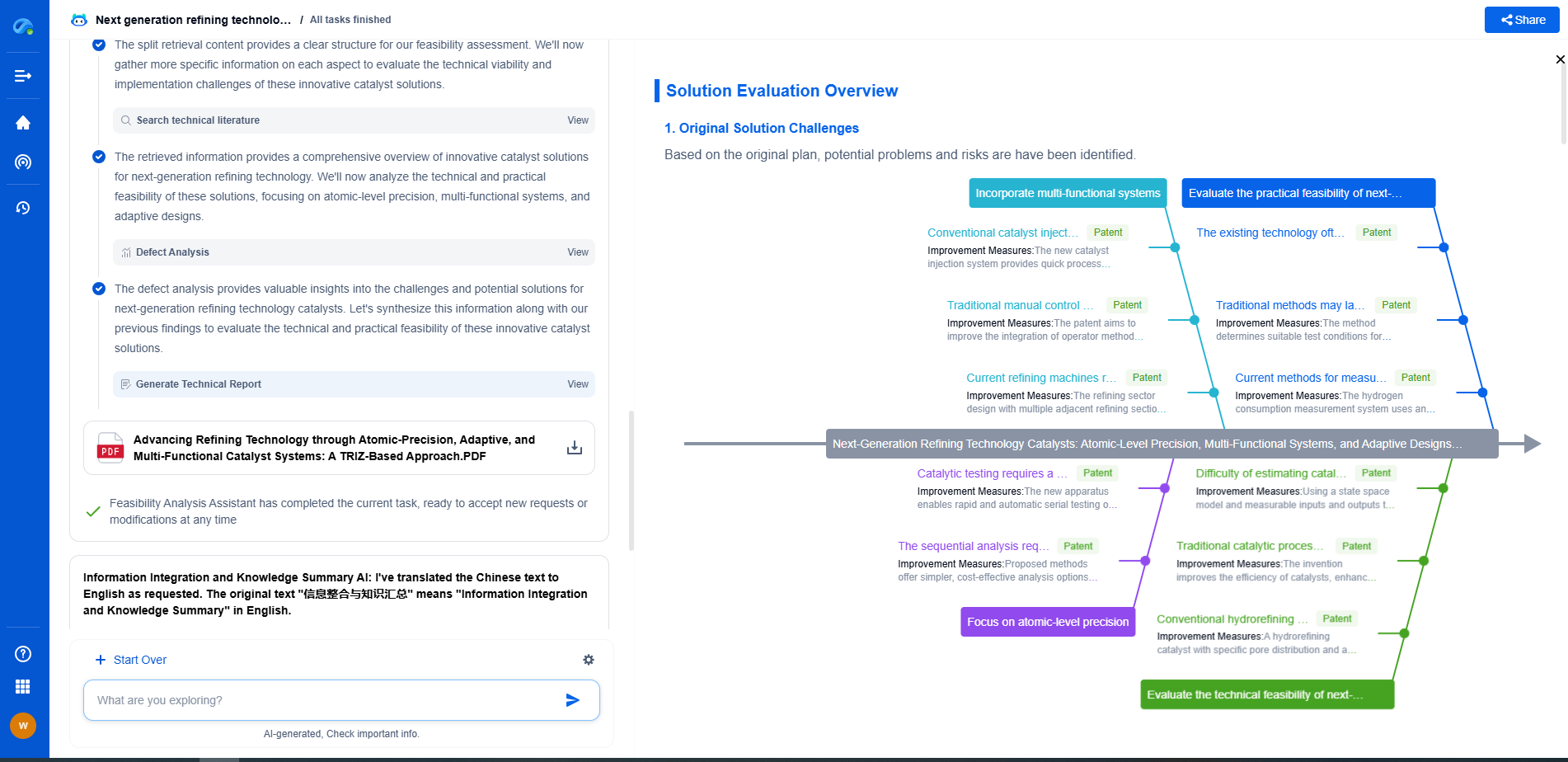What Is a Laser Doppler Vibrometer? Use Cases in Vibration Analysis
JUL 16, 2025 |
Understanding Laser Doppler Vibrometers
At its core, a laser Doppler vibrometer is designed to measure the velocity and displacement of vibrating surfaces. It employs a laser beam aimed at the surface of an object, with the reflected light being collected back by the device. The Doppler effect, which refers to the change in frequency or wavelength of a wave in relation to an observer moving relative to the wave source, is then used to detect the velocity of the vibrating object. This data is processed and translated into meaningful vibration metrics.
The beauty of LDVs lies in their ability to function without making physical contact with the object being measured. This non-intrusive measurement capability ensures that the test object’s behavior remains unaffected, leading to more accurate readings and a broader range of application possibilities.
How Laser Doppler Vibrometers Work
The operation of an LDV is grounded in the principles of laser Doppler interferometry. A laser beam is split into two paths: one that is directed onto the vibrating surface, and another that serves as a reference. The beam that hits the surface reflects back with a frequency shift, which is induced by the motion of the surface. The reference beam is then recombined with the reflected beam, creating interference patterns. These patterns are analyzed to determine the velocity and displacement of the surface vibrations.
The use of a laser allows for high precision and the ability to measure extremely small vibrations. Additionally, since it is a remote sensing technology, it can access areas that are difficult to reach or unsafe, such as components within a large machine or structures at great heights.
Applications of Laser Doppler Vibrometers in Vibration Analysis
1. **Automotive Industry**
In the automotive sector, LDVs are invaluable for testing and analysis of vehicle components. They are used to assess the vibration characteristics of parts such as engine components, exhaust systems, and chassis. By identifying unwanted vibrations or noise, engineers can make design adjustments to improve performance and comfort while reducing noise pollution.
2. **Aerospace and Defense**
The aerospace and defense industries leverage LDVs to ensure the structural integrity and reliability of aircraft and defense equipment. By analyzing vibrations in components like turbine blades or structural frames, potential failure points can be identified early, leading to better safety and durability standards. The non-contact nature of LDVs is particularly beneficial here, allowing for testing without compromising the integrity of sensitive parts.
3. **Civil Engineering**
In civil engineering, LDVs are used for monitoring bridges, buildings, and other structures. By examining the natural frequencies and damping properties of these structures, engineers can assess their ability to withstand environmental forces such as winds or earthquakes. This helps in designing buildings that are not only safer but also more cost-effective in terms of material usage.
4. **Biomedical Applications**
Biomedical researchers utilize LDVs to study biological tissues and organs. For example, they can be used to measure the vibrations of the eardrum or vocal cords, aiding in the diagnosis and treatment of hearing and speech disorders. The precision and non-invasive nature of LDVs make them ideal for such sensitive applications.
5. **Consumer Electronics**
In the realm of consumer electronics, LDVs contribute to the development of quieter and more efficient products. From analyzing the vibrations of hard drives to optimizing the acoustic performance of speakers and microphones, LDVs help manufacturers enhance the quality and longevity of consumer devices.
Advantages of Using Laser Doppler Vibrometers
The use of LDVs comes with several advantages. The primary benefit is their ability to provide accurate measurements without physical contact, preserving the test object's natural state. Additionally, they offer high precision, capable of detecting minute vibrations that might be missed by traditional contact methods. LDVs also allow for fast and flexible measurements, adaptable to various surfaces and environments, which adds to their versatility in different fields.
Conclusion
Laser Doppler vibrometers are a remarkable tool in the domain of vibration analysis, offering unparalleled precision and versatility. Their non-contact measurement capability makes them suitable for a wide range of applications across industries. As technology continues to advance, the role of LDVs in improving product designs, ensuring structural safety, and enhancing biomedical research will undoubtedly expand, underscoring their significance in the modern world.
In the world of vibration damping, structural health monitoring, and acoustic noise suppression, staying ahead requires more than intuition—it demands constant awareness of material innovations, sensor architectures, and IP trends across mechanical, automotive, aerospace, and building acoustics.
Patsnap Eureka, our intelligent AI assistant built for R&D professionals in high-tech sectors, empowers you with real-time expert-level analysis, technology roadmap exploration, and strategic mapping of core patents—all within a seamless, user-friendly interface.
⚙️ Bring Eureka into your vibration intelligence workflow—and reduce guesswork in your R&D pipeline. Start your free experience today.
- R&D
- Intellectual Property
- Life Sciences
- Materials
- Tech Scout
- Unparalleled Data Quality
- Higher Quality Content
- 60% Fewer Hallucinations
Browse by: Latest US Patents, China's latest patents, Technical Efficacy Thesaurus, Application Domain, Technology Topic, Popular Technical Reports.
© 2025 PatSnap. All rights reserved.Legal|Privacy policy|Modern Slavery Act Transparency Statement|Sitemap|About US| Contact US: help@patsnap.com

